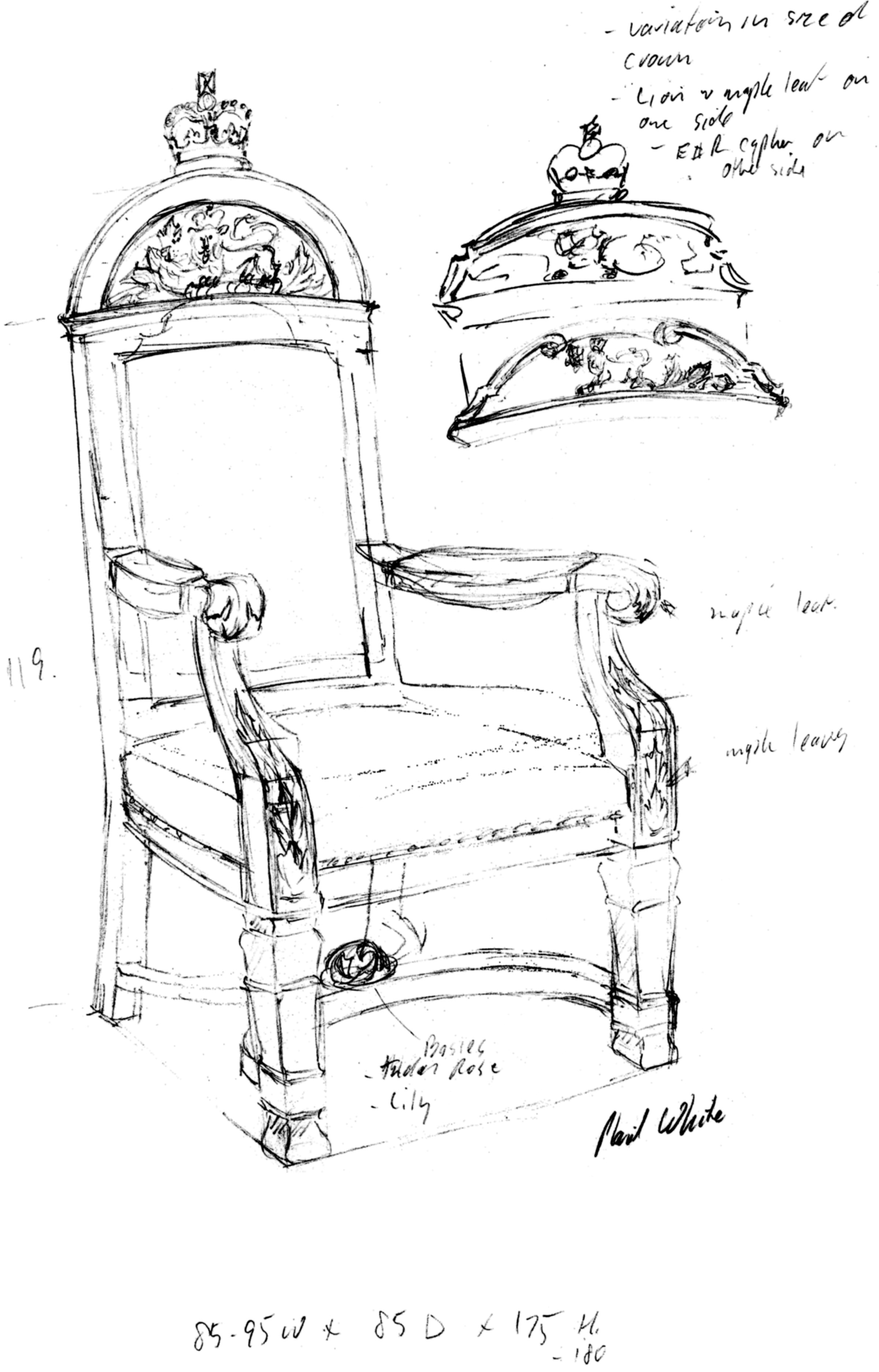The Senate thrones: Modern-day masterpieces in a historic setting

In February 2019, the Senate moved to the Senate of Canada Building, a former train station built in 1912. The Senate is expected to occupy its temporary location for at least 10 years while Parliament’s Centre Block — the Senate’s permanent home — is rehabilitated.
Although Centre Block is shuttered for rehabilitation work, Canadians can still experience its art and architecture through the Senate’s immersive virtual tour.
Since the Senate of Canada first convened in 1867, a throne representing the symbolic presence of the monarch in the Senate Chamber has served as a reminder of a connection between Crown and Parliament — the origins of which lie in 11th-century England.
Occupying a dais at the front of the Senate Chamber immediately behind the Speaker’s chair, the monarch’s throne and its smaller companion, the consort’s throne, are front-and-centre during events such as the opening of Parliament, the Speech from the Throne, the installation of the governor general and when a bill receives Royal Assent.


Centre Block’s venerable white-oak thrones, commissioned in 1878, are carved with a riot of twisting vines, oak leaves and medallion heads that reflect a 19th-century obsession with medieval design.
While Centre Block undergoes repairs, the thrones will also undergo much-needed conservation treatment and then be stored until the building’s reopening.
To mark the 150th anniversary of Confederation, as well as the Senate’s move to the Senate of Canada Building, a new set of thrones and Speaker’s chair were commissioned.
Dominion Sculptor Phil White designed them to harmonize with the Beaux Arts architecture of the Senate of Canada Building, a former railway station built in 1912. The construction of the three pieces involved skilled furniture makers, upholsterers, carvers and decorators from Quebec and Ontario.
“The thrones and the Speaker’s chair were inspired by furniture that John Pearson, the architect of Centre Block, designed for the original chamber in the 1920s,” Mr. White said. “They’re designed to form a cohesive suite.”
The walnut-wood thrones are decorated with sprays of maple leaves, the cypher of Queen Elizabeth II and the lion crest from the Coat of Arms of Canada.
A piece of English walnut from Windsor Great Park, a royal preserve south of Windsor Castle, was donated to the Senate to be incorporated into the headpieces.
“There are also references to the old regime of New France, symbolized by the lily, and the English regime that succeeded it, symbolized by the English rose,” said Mr. White.
The Speaker’s chair is embroidered with the Senate emblem on its seatback. Like the permanent chair in Centre Block, its height can be adjusted to accommodate a Speaker of any stature.
Carved into the headpiece is the “S” to represent the word “Senate” surrounded by a flourish of maple leaves. The Speaker’s chair is a focal point in the Chamber, emphasizing the prominent role of the Speaker in the conduct of Senate proceedings.
This article is part of a series about the Senate’s move.






